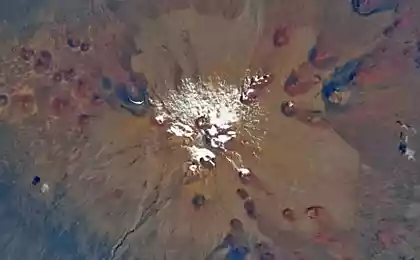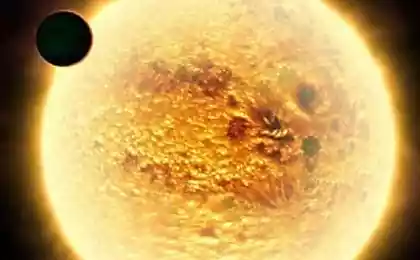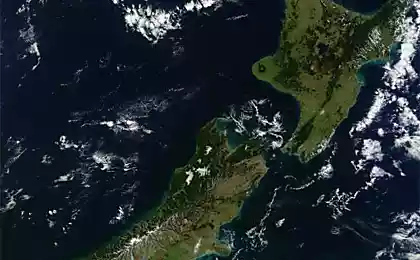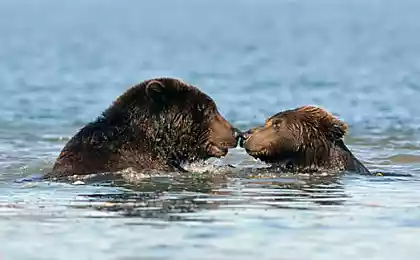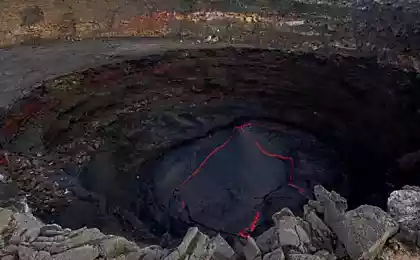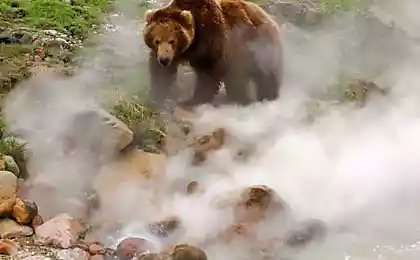2577
Interesting facts about volcanoes

The term "volcano" comes from the Latin «Volcanus» or Vulcan, the Roman god of fire. First, the Romans used the term to refer to Mount Etna, where their belief is the Forge of Vulcan.
The ancient Greeks believed that under Mount Etna live fire god Hephaestus. According to the myth Prometheus stole fire from the volcano Hephaestus and gave it to people.
Hundreds of years ago the Aztecs, who lived in Mexico, and the people of Nicaragua believed that gods live in the lava. They sacrificed to the gods of this mighty beautiful young girls.
In the Middle Ages, many believed that volcanoes were input into the fiery hell.
Over the past 400 years, almost a quarter of a million people died as a direct result of volcanic eruptions. Side effects, such as hunger, disease and climate change is likely to triple this number.
Bird species named Male uses the heat generated by hot volcanic sand, for the "incubation" of their large eggs. When the chicks hatch, they break their way to the surface of the sand.
The most dangerous active volcano today is Popocatepetl, he is nicknamed El Popo and is just 33 miles from Mexico City. El Popo produces thousands of tons of gas and ash into the air each year.
The myth of the lost city of Atlantis, which sank in the ocean, can be based on the history of the Greek island of Santrorini (Thira), part of which plunged into the sea after a terrible volcanic eruption in the Bronze Age.
To measure the temperature of the volcano, volcanologists use a special electric thermometer, called "thermocouple". So red-hot lava, glass thermometers that it melted.
In Australia, there is no active volcano, as it is situated in the center of tectonic plate.
Land with lots of volcanoes - some of the most fertile agricultural areas in the world. Volcanoes saturate the soil of the Earth nutrients such as potassium and phosphorus. Weathering of volcanic rocks also produces nutritious soil substances.
"Love" is derived from the Latin «lavara», meaning "to wash, rinse," it is a magma to escape to the surface. Lava can flow at up to 90 km / h.
Volcanoes are formed by subduction (when two tectonic plates bump against each other), ocean cleft (when two plates diverge) or hot zones (weak parts of the earth plates).
In 1963, an underwater volcano has spawned the latest land surface on Earth, Surtsey, which is located near the south-west coast of Iceland. At present the area Surtsey is about 2, 5 square kilometers, and is named in honor of the island of Surt, the Molten Giant from Norse mythology.
The most terrible volcanic disaster of the twentieth century is considered eruption of Mont Pelee in 1902 on the island of Martinique in the West Indies, which killed 30,121 people. Only two people survived: a shoemaker, who lived on the edge of the island, and the prisoner, who was locked in a prison cell with thick stone walls.
On Earth, about 1,500 active volcanoes, except underwater. Of these, only 20-30 erupt each year.
Volcanologists measure the power of the eruption Scale volcanic eruption (VEI), where 0 is the weakest eruption, and 8 - the most powerful. Eight is usually reserved for the most powerful eruptions, popularly called "supervolcano».
Supervulkanicheskoe eruption of Lake Toba in Indonesia about 75,000 years ago plunged the Earth into a volcanic winter (known as the era of the Ice Age). It also led to the formation of sulfuric acid in the atmosphere.
The eruption of Mount St. Helens May 18, 1980 had a capacity of 500 atomic bombs. Geologists have regarded him as a moderate eruption.
Pacific Ring of Fire - a large Pacific plate boundary, which slowly moves up under the other plate or encounters them. Most of the world's largest volcanoes is concentrated here.
In AD79 there was a strong eruption of Vesuvius that destroyed Pompeii and Herculaneum. Stories of witnesses of the time, recent excavations and preserved remains brought us the horrifying story of the eruption.
In 1669, residents of Naples were amazed to see the rain, like a small black crosses. Although they thought that it was proof that the Holy Ianuary patronizes them, crosses, in fact, have been twinned crystalline pyroxene ejected from the crater of Vesuvius. The last time Mount Vesuvius erupted in 1944.
In some volcanic areas, such as Iceland, hot magma energy can be used to heat water and drive the power. This type of energy is called geothermal (heat of the earth).
On some volcanic islands such as Iceland and Hawaii, there are black beaches. Their sand is composed of basalt, pyrogenic rock, formed when lava cools down and disintegrates into grains.
About 20% of all the volcanoes are under water.
In August 1986, the crater lake of Lake Nyos in Cameroon (West Africa), a cloud consisting of water and carbon dioxide. Heavy gas cloud descended the slope and accumulated in the valley, causing a fatal choking in 1700 and 3500 head of cattle living in the villages below.

